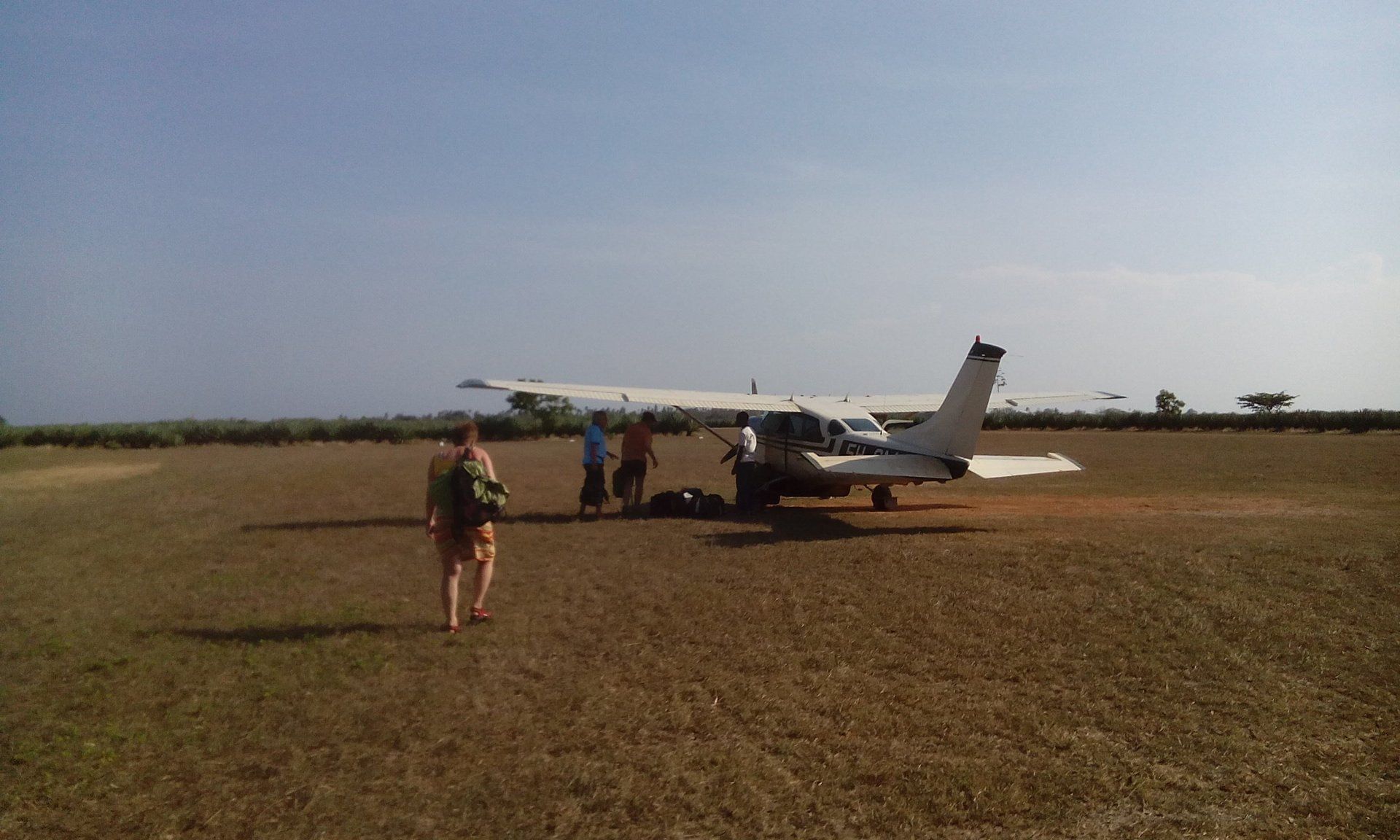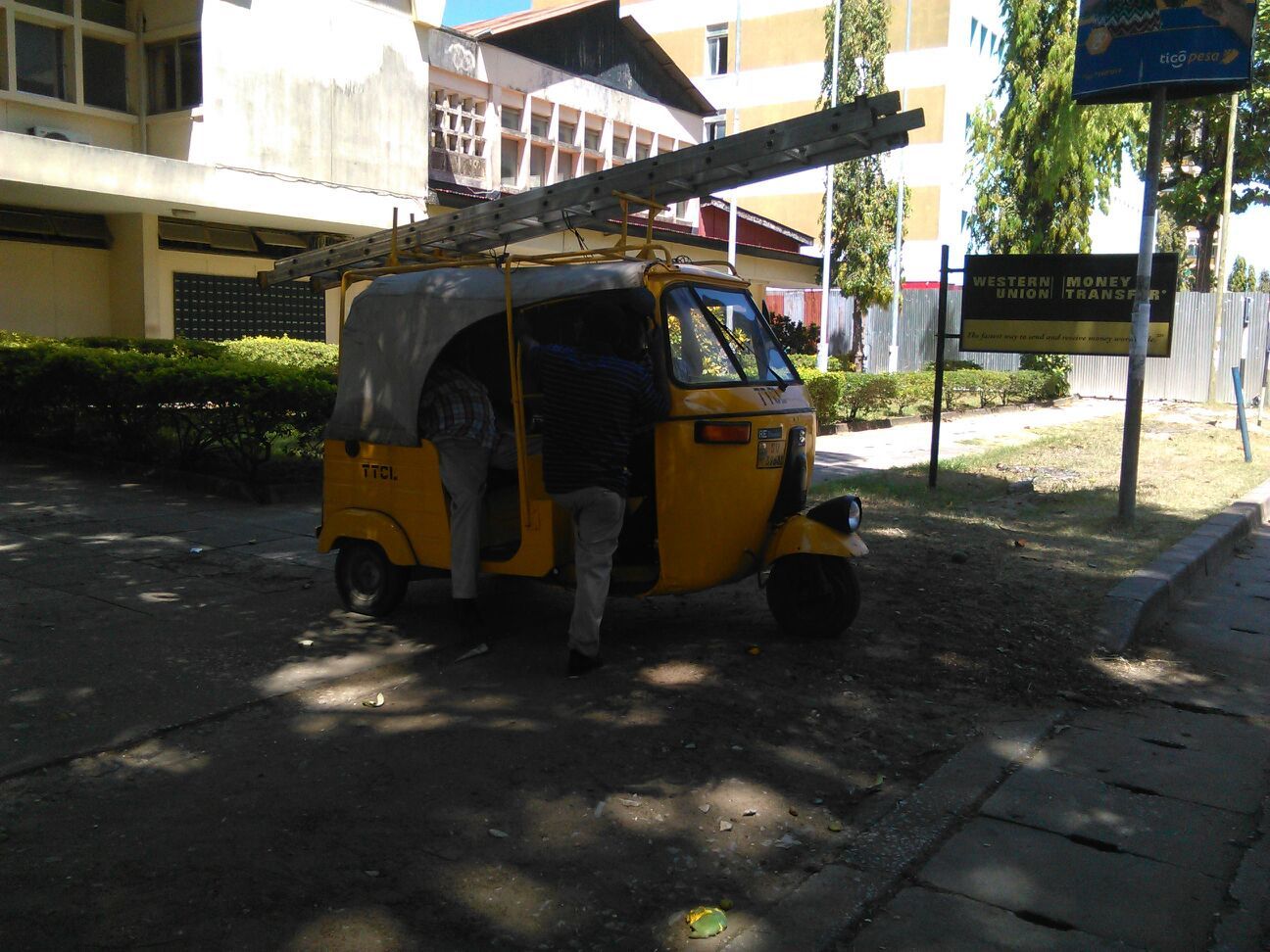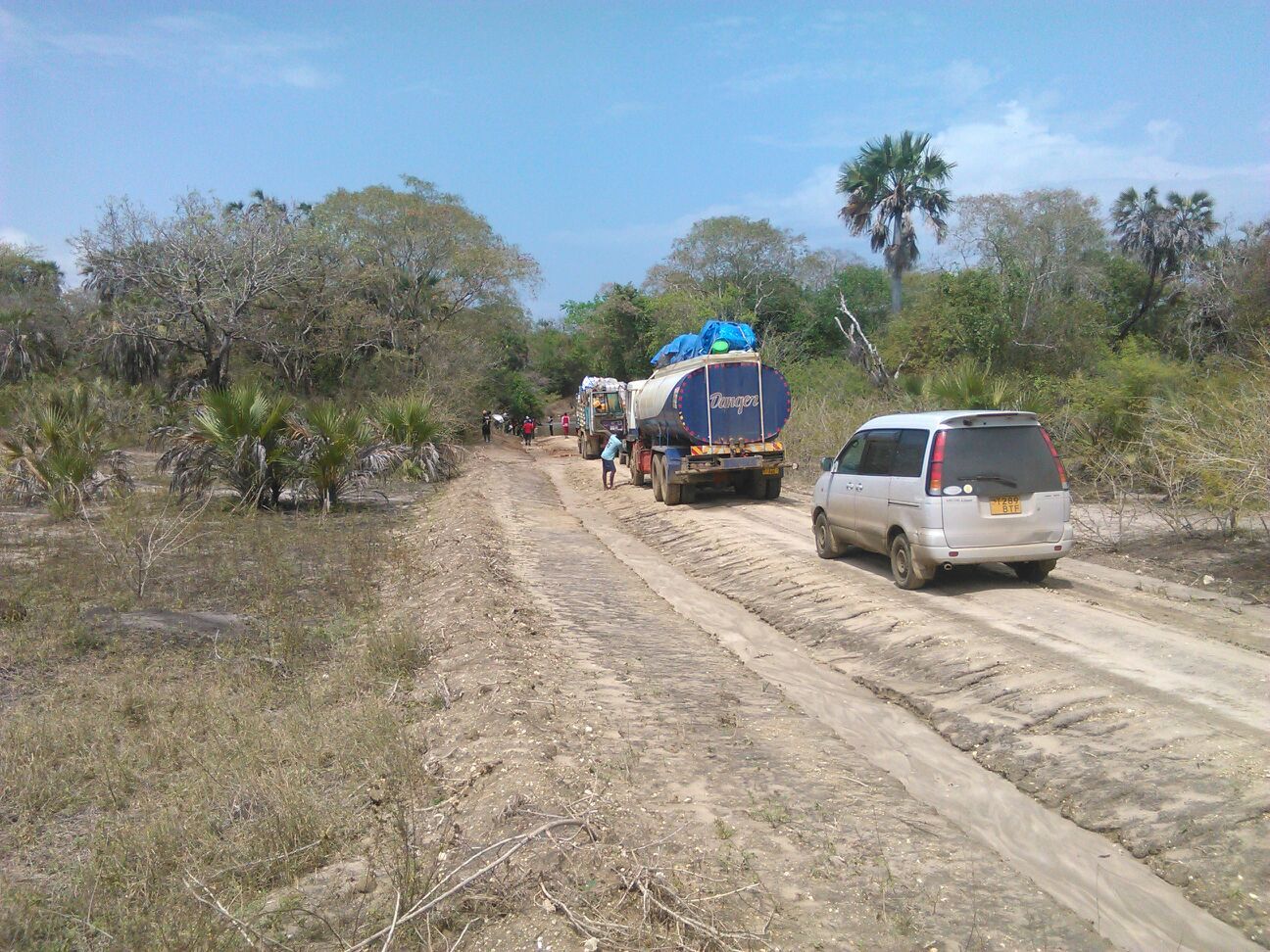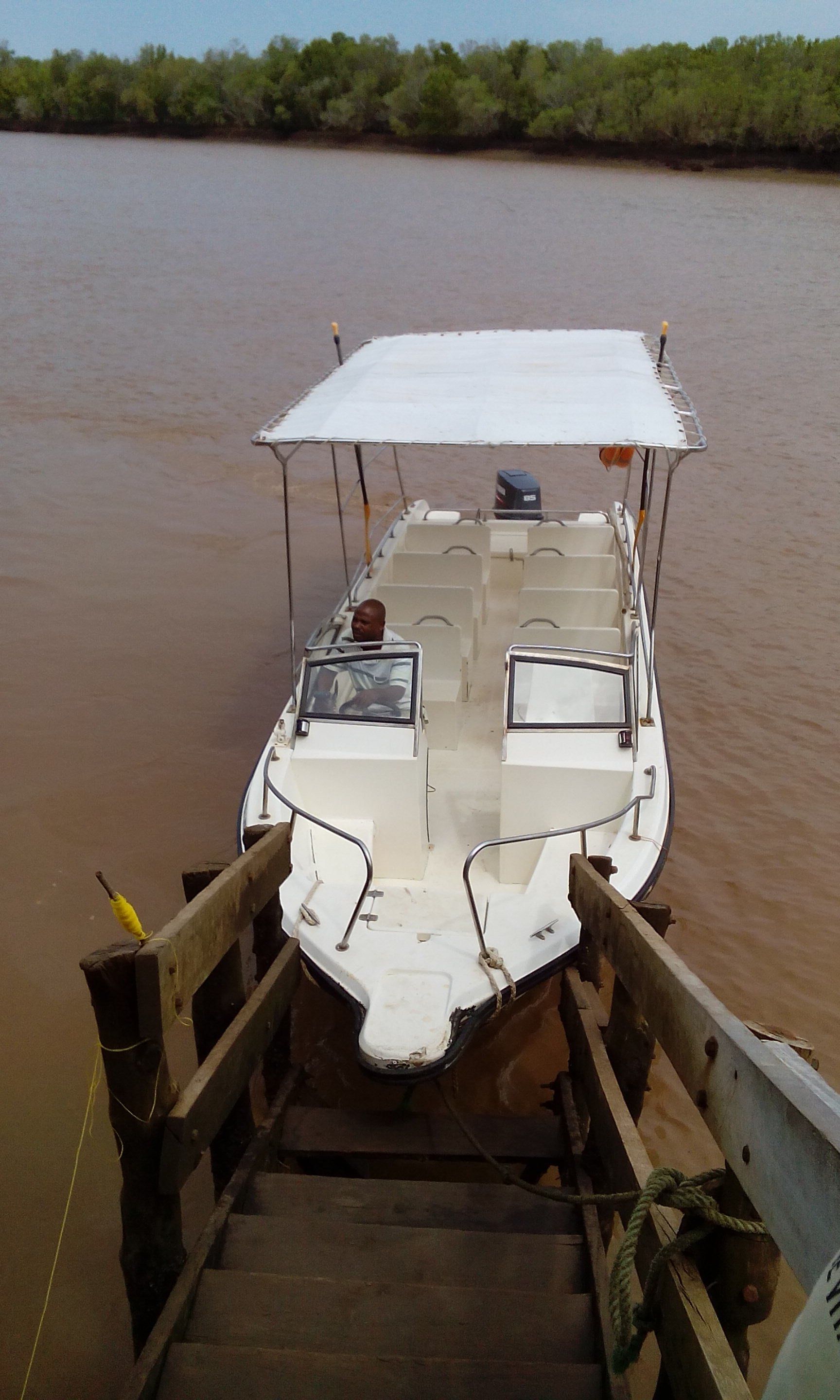Arrival and onward journey
The path is the destination .... and here in Africa the paths are a bit different and above all longer!
In Tanzania, only the main traffic artery is an asphalt road and on all other runs a distance of 100 km, depending on the condition, may take 3 to 4 hours. But every ride is a very special experience: fantastic views into the endless Maasai plain, from time to time the turquoise sea flashes through the palm trees, an antelope stands at the roadside and in a small village we get some juicy pineapple for refreshment. Here begins the safari already on the outward journey. Most airlines offer free feeder services from many German cities, for example, British Airways flies from Dusseldorf, Hamburg, Frankfurt, Munich, Berlin, Stuttgart and Hanover to London, where you then transfer to the "big" plane to your destination. For the luggage you do not have to worry about when changing, it will be reloaded by the airline. As a rule, 20kg of luggage per person are allowed on the route to East Africa. There are some airlines that allow more luggage, such as Ethiopian Airlines and KLM. Individually tailored to travel plans, budget and time, you can choose from the following airports: Nairobi, Mombasa, Kilimanjaro, Dar es Salaam, Zanzibar. Many airlines allow a forklift, meaning you land eg Kilimanjaro Airport and fly back home from Zanzibar Airport two weeks later. This option is very helpful in the route and safari planning and often saves a lot of time in the transfers. Depending on the flight plan and company, you can start your adventure on the outbound flight and make a stopover from a few hours to several days in an exciting city such as Dubai (with Emirates Airlines). Our travel agency will be happy to advise you on flights: info@flightshop.de
Bargains and Last Minutes are available at www.ebookers.de or again and again at the "Fly Price Promotions" at Condor. Further helpful tips on arrival and onward journey can be found in the respective chapter on the airports. Tanzania can actually be easily traveled with your own vehicle. A four-wheel drive vehicle is a prerequisite, because apart from the main traffic artery, there are hardly any asphalt roads. When it rains, the slopes can often become as smooth as soft soap. Do not expect signs! Often you have to go by feel or compass / GPS, because even the existing road maps are not complete. We can recommend you, for example, the Nelles Map, which can also be purchased in the German book trade. Gas stations are spread across the country, but it is advisable to refill with a half-full tank when the opportunity arises. Often we have already experienced that a gas station has no gas or the power has failed and can not be tapped. A replacement canister of 20-40 liters should always be full. The gasoline prices have gone crazy in the last few months: a liter of diesel or gasoline currently costs 2100TSH (about € 1.00). At a road check you must be able to show the following: vehicle documents; Carnet de Passage or Customs papers in your own vehicle If you have a vehicle with a Tanzanian license plate you need an international driver's license; Passport with visa; the registration card in original or certified copy, a valid Tanzanian motor vehicle liability insurance (a sticker on the disc); 2 warning triangles; Fire extinguishers. On the asphalt roads there are often police checks and speed measurements! Within most villages 30km / h is announced. Please always strapped drive the passenger. Seatbelt is checked very strongly. If you are traveling with your own vehicle, you will need to complete and stamp the Carnet de Passage on the border. Do not be surprised at funny questions, most of the border guards have never seen anything like that and may need subtle and inconspicuous help. Furthermore, if the car does not have an East African license, you will need to pay a Fuel Levy Tax ($ 5US) and a Road Tax ($ 20 per month). In addition, you register at the police station at that border and also at the immigration office usually a book in which you enter all the data. In Tanzania itself, you should be able to present a Tanzanian liability insurance at a road check, which you can sometimes buy at the border or even better in the neighboring country with an insurance broker (about 55US $). Borrowing a rental car is recommended only for people who know a little about cars, because flat tires and small breakdowns such as clogged gasoline or diesel filters are part of everyday life here. In Kenya, rental cars are much cheaper, but not every landlord allows you to travel by car across the border. In Tanzania, the car rental companies are located in Dar es Salaam (eg Evergreen) and in Arusha (eg Fortes Safaris or Naaz). When renting you should definitely make sure to get a four-wheel drive vehicle with an intact spare tire (preferably two!) And tools such as jacks and a matching wheel cross. A warning triangle and a fire extinguisher are also part of the equipment and the insurance sticker should be valid long enough, otherwise the street checks of the police are quite expensive. You should also have a (valid) international driver's license. The journey to us with your own vehicle or rental car is described in the respective chapters of the airports under Continue from ..... Look simply from which direction you will arrive. Here are our GPS coordinates: S: 5 ° 32.510 'E: 38 ° 58.080'
Public Transport: There is a railway line, large intercity buses, and shared taxis (in Tanzania: Dalla Dalla / in Kenya: Matatu), which bring you to almost every corner of the country for little money. You have to have a lot of time and patience, because timetables are rarely respected. You should be neither fear of contact nor be shy of contact, because there are usually more passengers taken than seats are available. Only in the remote rural areas and in the national parks, it is difficult or not as a backpacker.
The description of the journey to us by public transport can be found in the respective chapters on the airports under onward journey ...
In Tanzania, only the main traffic artery is an asphalt road and on all other runs a distance of 100 km, depending on the condition, may take 3 to 4 hours. But every ride is a very special experience: fantastic views into the endless Maasai plain, from time to time the turquoise sea flashes through the palm trees, an antelope stands at the roadside and in a small village we get some juicy pineapple for refreshment. Here begins the safari already on the outward journey. Most airlines offer free feeder services from many German cities, for example, British Airways flies from Dusseldorf, Hamburg, Frankfurt, Munich, Berlin, Stuttgart and Hanover to London, where you then transfer to the "big" plane to your destination. For the luggage you do not have to worry about when changing, it will be reloaded by the airline. As a rule, 20kg of luggage per person are allowed on the route to East Africa. There are some airlines that allow more luggage, such as Ethiopian Airlines and KLM. Individually tailored to travel plans, budget and time, you can choose from the following airports: Nairobi, Mombasa, Kilimanjaro, Dar es Salaam, Zanzibar. Many airlines allow a forklift, meaning you land eg Kilimanjaro Airport and fly back home from Zanzibar Airport two weeks later. This option is very helpful in the route and safari planning and often saves a lot of time in the transfers. Depending on the flight plan and company, you can start your adventure on the outbound flight and make a stopover from a few hours to several days in an exciting city such as Dubai (with Emirates Airlines). Our travel agency will be happy to advise you on flights: info@flightshop.de
Bargains and Last Minutes are available at www.ebookers.de or again and again at the "Fly Price Promotions" at Condor. Further helpful tips on arrival and onward journey can be found in the respective chapter on the airports. Tanzania can actually be easily traveled with your own vehicle. A four-wheel drive vehicle is a prerequisite, because apart from the main traffic artery, there are hardly any asphalt roads. When it rains, the slopes can often become as smooth as soft soap. Do not expect signs! Often you have to go by feel or compass / GPS, because even the existing road maps are not complete. We can recommend you, for example, the Nelles Map, which can also be purchased in the German book trade. Gas stations are spread across the country, but it is advisable to refill with a half-full tank when the opportunity arises. Often we have already experienced that a gas station has no gas or the power has failed and can not be tapped. A replacement canister of 20-40 liters should always be full. The gasoline prices have gone crazy in the last few months: a liter of diesel or gasoline currently costs 2100TSH (about € 1.00). At a road check you must be able to show the following: vehicle documents; Carnet de Passage or Customs papers in your own vehicle If you have a vehicle with a Tanzanian license plate you need an international driver's license; Passport with visa; the registration card in original or certified copy, a valid Tanzanian motor vehicle liability insurance (a sticker on the disc); 2 warning triangles; Fire extinguishers. On the asphalt roads there are often police checks and speed measurements! Within most villages 30km / h is announced. Please always strapped drive the passenger. Seatbelt is checked very strongly. If you are traveling with your own vehicle, you will need to complete and stamp the Carnet de Passage on the border. Do not be surprised at funny questions, most of the border guards have never seen anything like that and may need subtle and inconspicuous help. Furthermore, if the car does not have an East African license, you will need to pay a Fuel Levy Tax ($ 5US) and a Road Tax ($ 20 per month). In addition, you register at the police station at that border and also at the immigration office usually a book in which you enter all the data. In Tanzania itself, you should be able to present a Tanzanian liability insurance at a road check, which you can sometimes buy at the border or even better in the neighboring country with an insurance broker (about 55US $). Borrowing a rental car is recommended only for people who know a little about cars, because flat tires and small breakdowns such as clogged gasoline or diesel filters are part of everyday life here. In Kenya, rental cars are much cheaper, but not every landlord allows you to travel by car across the border. In Tanzania, the car rental companies are located in Dar es Salaam (eg Evergreen) and in Arusha (eg Fortes Safaris or Naaz). When renting you should definitely make sure to get a four-wheel drive vehicle with an intact spare tire (preferably two!) And tools such as jacks and a matching wheel cross. A warning triangle and a fire extinguisher are also part of the equipment and the insurance sticker should be valid long enough, otherwise the street checks of the police are quite expensive. You should also have a (valid) international driver's license. The journey to us with your own vehicle or rental car is described in the respective chapters of the airports under Continue from ..... Look simply from which direction you will arrive. Here are our GPS coordinates: S: 5 ° 32.510 'E: 38 ° 58.080'
Public Transport: There is a railway line, large intercity buses, and shared taxis (in Tanzania: Dalla Dalla / in Kenya: Matatu), which bring you to almost every corner of the country for little money. You have to have a lot of time and patience, because timetables are rarely respected. You should be neither fear of contact nor be shy of contact, because there are usually more passengers taken than seats are available. Only in the remote rural areas and in the national parks, it is difficult or not as a backpacker.
The description of the journey to us by public transport can be found in the respective chapters on the airports under onward journey ...









